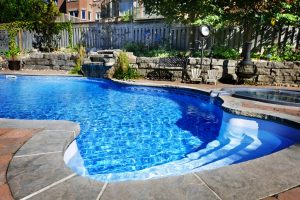Everybody dreams of living in a healthy environment. We all want to inhale the fresh air, drink clean water, walk under green trees and swim in crystal clear waters. However, human activities have brought destruction to the environment. Careless garbage disposal, illegal logging, and dynamite fishing are examples of these activities.
The task of taking care of our environment may be gargantuan. But we can do our part in rebuilding a livable and sustainable environment. Constructing an eco-friendly home can be the starting point. But what is meant by eco-friendly construction?
Eco-friendly home building means that it used materials and energy that were used were not only environmentally harmful but also sustainable. It is also known as a green building. So, what eco-friendly practices can you adopt in building your home? Here are some ways that could help.
Observe proper disposal of waste building materials.
This is one step any contractor and homeowner needs to do. The crushed materials can be recycled for future construction jobs instead of indiscriminately dumping them into landfills. It can save construction companies the additional cost of illegally disposing toxic materials.
Consider the source of the materials.
Use materials that were locally sourced rather than imported from somewhere else. Moreover, locally sourced materials are cheaper, given the shipping fee you will incur in delivery. Choosing materials that are renewable and recyclable can cushion the impact on the environment. This means incorporating natural materials such as wood, stone, recycled glass, reclaimed bricks, and even straw.
Opt for a smaller house.
A small house designed using energy-efficient and eco-friendly construction techniques has a small environmental effect. According to one study, people who opted to live in a tiny home reduced their energy consumption by 45 percent.
A small house may not be your dream house. But a little creativity using creative design principles can do the techniques. For instance, installing custom cabinets can save a lot of space for a tiny house.
Take advantage of the sun and the wind.
Using glass panels or smoked glass would maximize sunlight entering your home. Building sliding windows allows more sunshine into your room, too. You could consider installing solar panels to take advantage of the sun. Solar panels are silicon-made devices that can absorb the sun’s heat and convert them into heat energy, saving you several hundred dollars on your electric bill.
Constructing wide and windows across one another can facilitate natural ventilation. It lessens your demand for air-conditioning which consumes so much electricity and therefore releases pollution.
Use energy-efficient lighting.

Use low-power lights instead of high-power consumption lights like incandescent lamps. These low-power lights can cut power use by 80-90 percent. There are two types of energy-efficient lights or bulbs: Compact fluorescent lamps (CFL) and Light Emitting Diode (LED) lamps. Of these two, LED lamps are more efficient than CFLs and incandescent light bulbs. It uses electricity to illuminate a small light source which is 90 percent more efficient.
Tap rainwater.
Collect rainwater by installing a water butt or a rainwater harvesting system. You could use the collected rainwater to water your plants, wash the car, wash the clothes, garden irrigation, and toilet flush. This can diminish your water demands from the main source, saving you a few dollars.
Look into the natural insulation system
Insulating the home is one expense worth providing for. Insulation retains the heat indoor during winter, reducing the need for heaters. But if you find the cost too prohibitive, you may use environmentally friendly materials such as thermacork, aerogel, cotton, denim, icynene, sheep’s wool and cellulose. Use natural materials such as foams and tapes to seal cracks and gaps around windows. It will make your home draught-proof and keep heat in, thus saving energy.
Apply safe and friendly environment paint.
Use environment-friendly painting materials. Or go for quick-dry odorless paints. These paints will not cause health problems like respiratory illnesses, skin allergy, eye irritation, and even headaches. But if you choose a paint that is not odorless, you could do the following:
Stay outdoor until the paint gets dry.
Book an overnight stay in a hotel if your budget allows.
Place a cup of vinegar in the corner of the room overnight. It will absorb the paint odor.
Building one’s dream house is a right no one should be deprived of. But while you witness how your dream house comes into reality, you may be destroying the environment. But there are ways to avoid it by simply adopting more eco-friendly practices in constructing your home. It might be unthinkable, but it can be done. You only need to be open to the idea. In the end, you might be surprised by its benefits.






